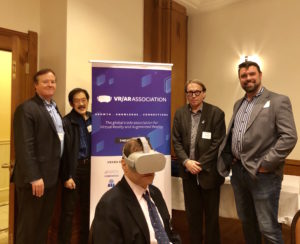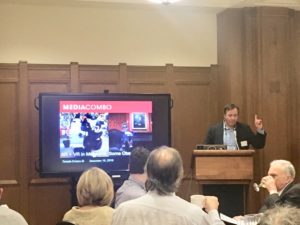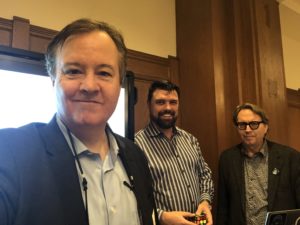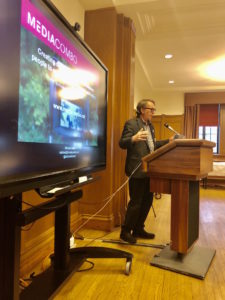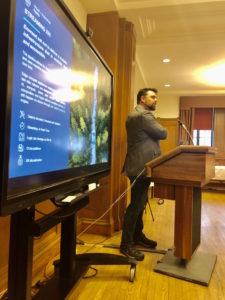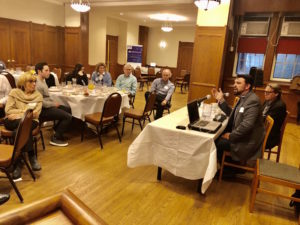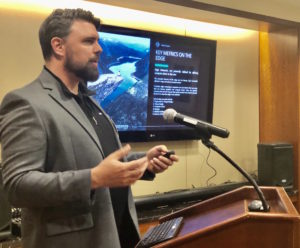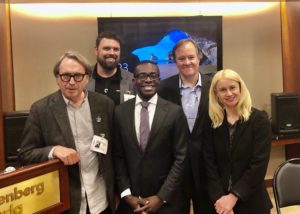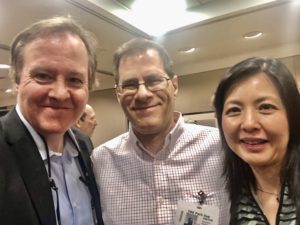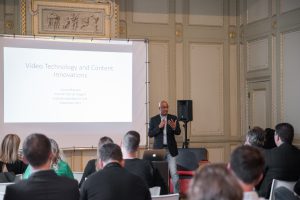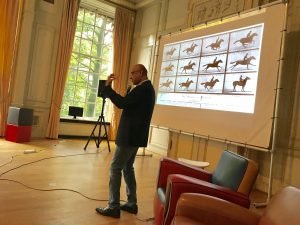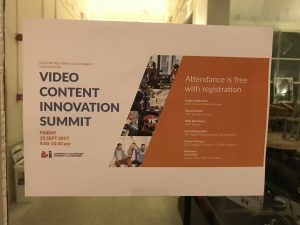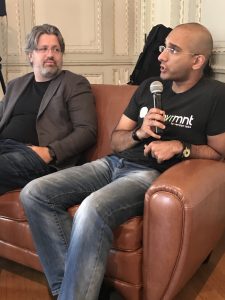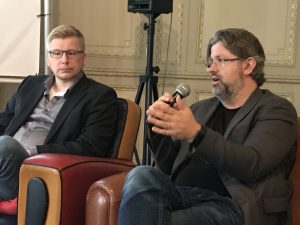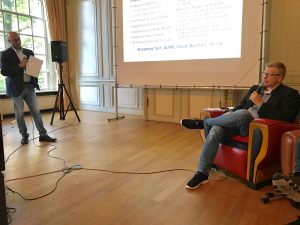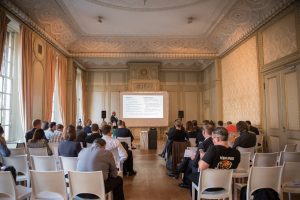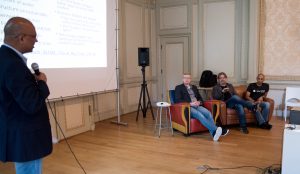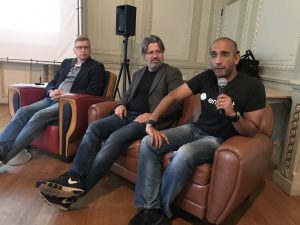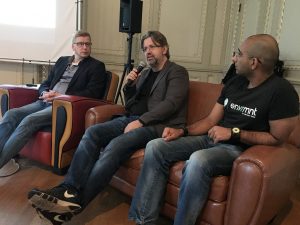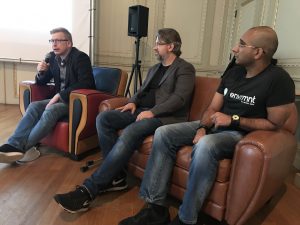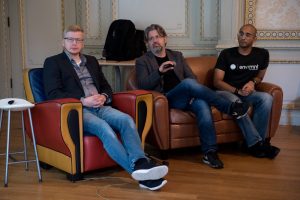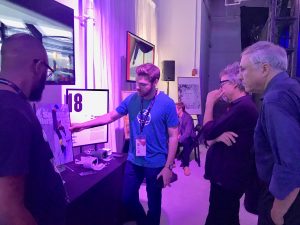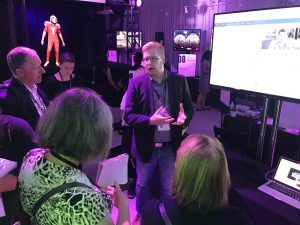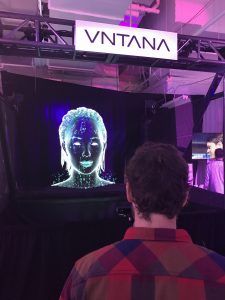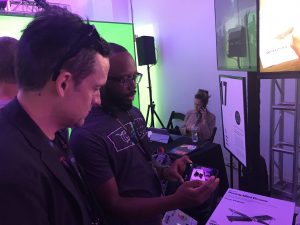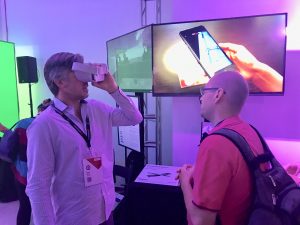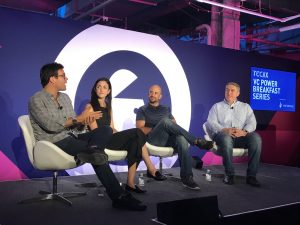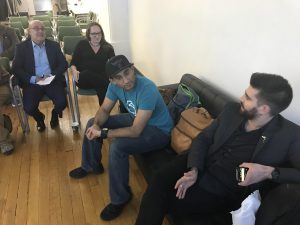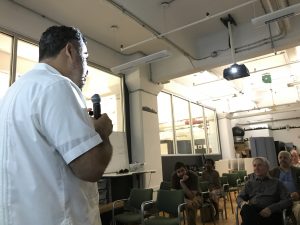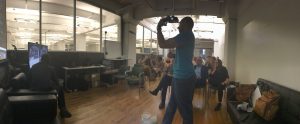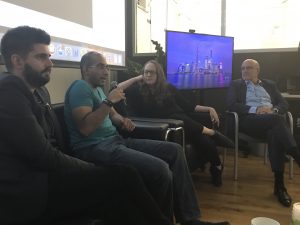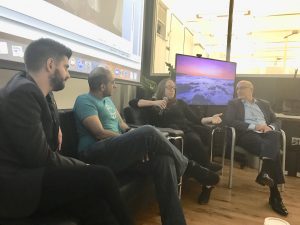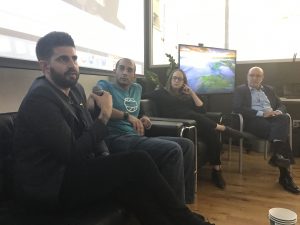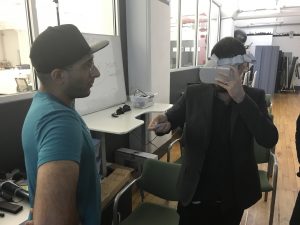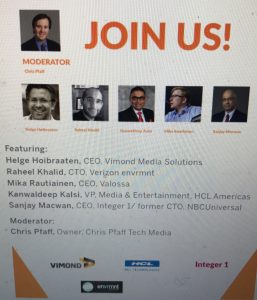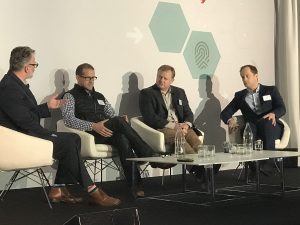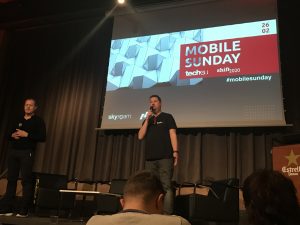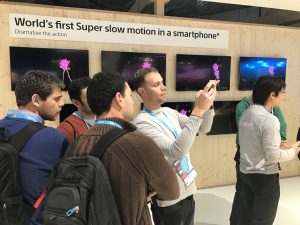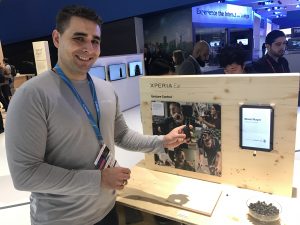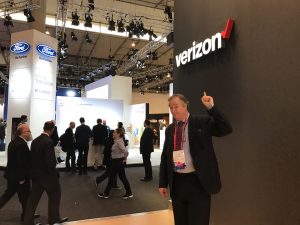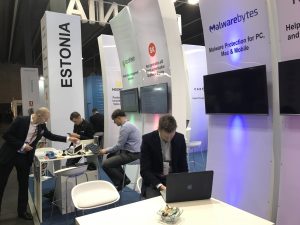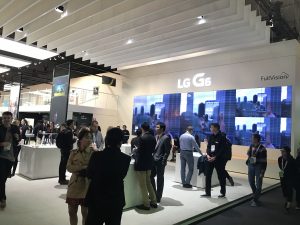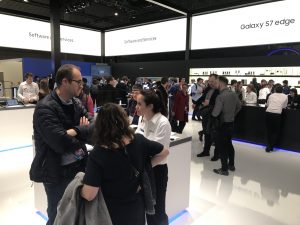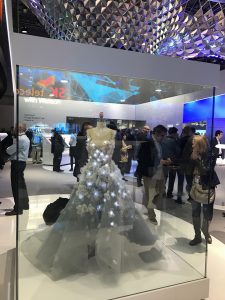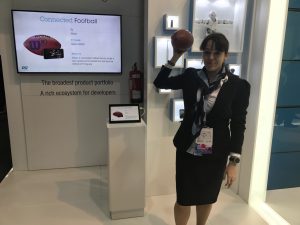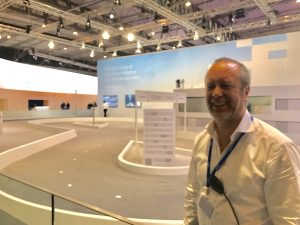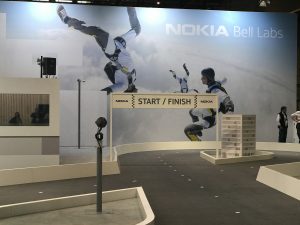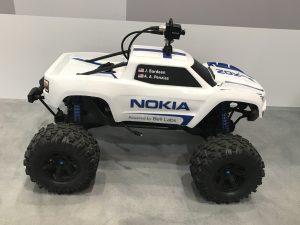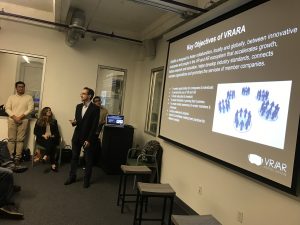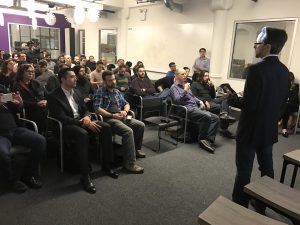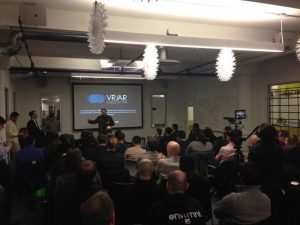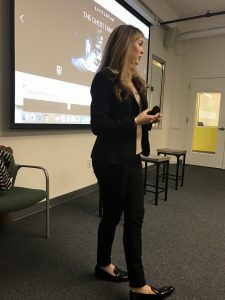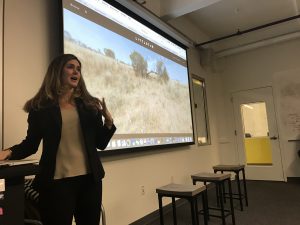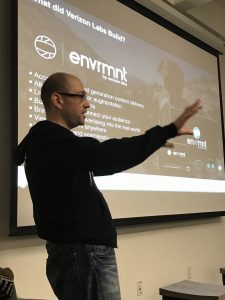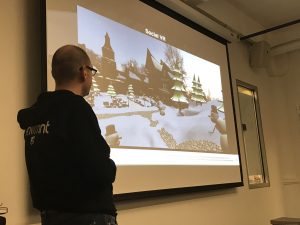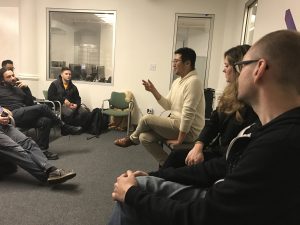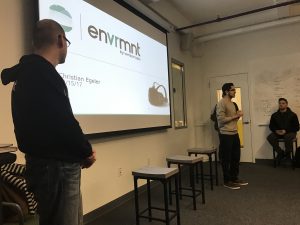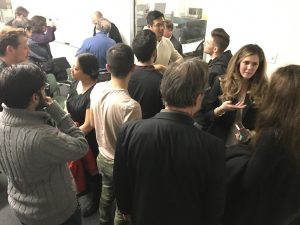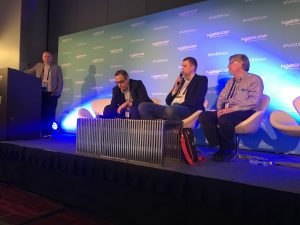
Skip Pizzi (left) moderates the ‘Overview of Emerging Technologies’ session, the first session of the conference, 04.22.17
NAB 2017 was one of the more eventful showdowns in Las Vegas in recent years for the pro video industry, even though no monster product launches or titillating vapor announcements were made. It’s hard to imagine today, but the show that is now a battle for supremacy in the cloud, and in the workflow, was once the place of massive hardware launches. Gone are the days of lines to see the RED camera; the latest Avid or Media 100 editing suite, or Panasonic 3D system. Now, your next technology partner is likely to be the start-up that just cut a deal with Facebook. And, yes, start-ups at NAB are now a thing, not just window-dressing. As the media industry, globally, spawns more innovation in the start-up domain, NAB has expanded its Sprockit start-up program, creating a destination in the North Hall of the Las Vegas Convention Center.
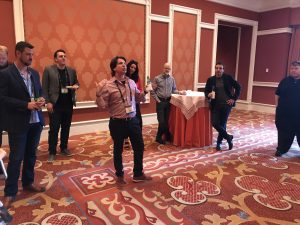
Harry Glazer (center) addresses the Sprockit 2017 program companies at a pre-show reception, 04.23.17
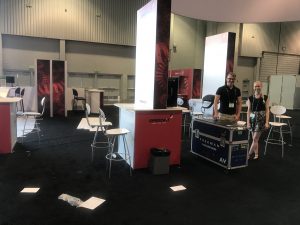
Ville Hulkko and Karita Kasurinen, of Valossa, setting up in the Sprockit demo area in the North Hall, 04.23.17
Facebook took over the South Hall Upper Level corner demo area with a partner pavilion, a cheeky way to cut into the action through FB Live, and other recent F8 unveilings such as Spaces and Camera. Zuck did not make it to NAB, but it begs the question as to whether he’ll keynote next year, now that Snapchat has gone public. The fact that Facebook was a Nexus toss from the Google booth was more irony; this was Google’s most impressive showing at NAB, and they scared the bejesus out of anyone and everyone who was paying attention.
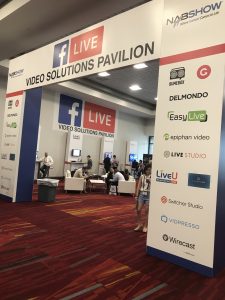
Facebook’s partner pavilion outside the South Hall Upper Level. NAB 2017 marked Facebook’s first year as an exhibitor
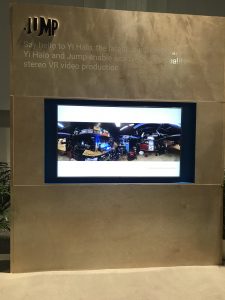
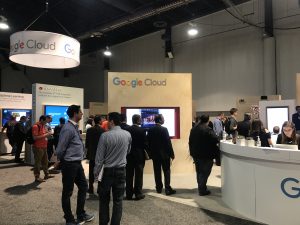
Google Jump camera demo (left) and a wider shot of the Google booth in the South Hall Upper Level
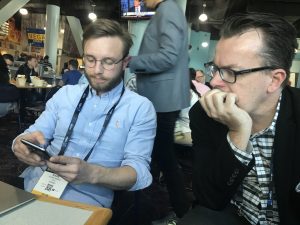
Alexis Kenda (left) demos Reminiz for Jason Deadrich, Vision Media, 04.26.17
While 8K, HEVC, HDR, and questions regarding the next phases of OTT growth saturated conversations, more and more of the show scratched the edges of “what next?” with regard to 5G, VR and AR as broadcast tools, and AI as a catch-all for whatever ails your product suite. There was certainly less buzz about VR at NAB 2017 than the previous year, but more discussion about cameras, workflow, and services on the show floor. I didn’t even make it to the VR pavilion – as if it really mattered. When every major post house and DP worth his/her light gauge is well past their initial VR project, it’s time to get real and send the fairy dust sprinklers back to their bungalows in West Hollywood (or Covina). The same could have been said about drones; this year, the Central Hall hosted a more sober offering of drone purveyors, with less fanfare on hero demos. We ran into Gremsy, a Vietnamese drone company, on Sunday morning, with some cool products, and saw little else that had not been seen before.
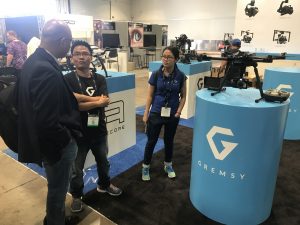
Gremsy, a Vietnamese drown manufacturer, joined the throng in the Central Hall, 04.23.17
The exhibitors who annually pack in scores of loyal customers – Blackmagic Design, Adobe, Vizrt – were not to be outdone by the likes of Ooyala, who took over part of the outdoor demo area with a pavilion. More traffic was seen this year in the OTT services area in the South Hall Upper Level, where Vimond had an impressive display.
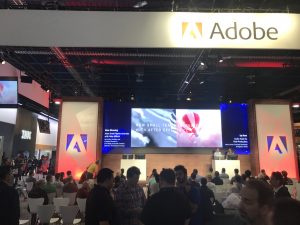
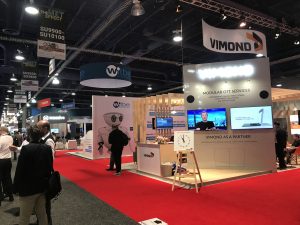
The Adobe booth, packed as always. Vimond maintained steady traffic in the South Hall Upper Level
The telecom world was mostly in the background at NAB 2017, although Verizon had three (because two is not enough) booths at the show, with the Verizon Labs booth featuring streaming VR, via Ozo camera, with the Nokia booth, and more dazzling demos from Verizon envrmnt, which showcased its World Builder demo to great effect.
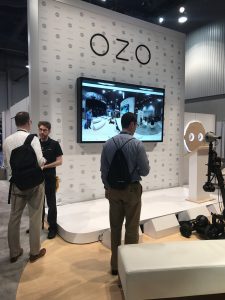
Nokia Technologies streamed live footage from an Ozo camera on a private fiber line to the Verizon Labs booth
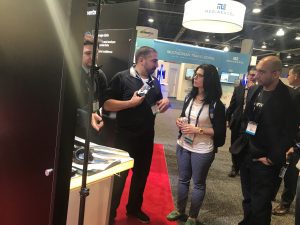
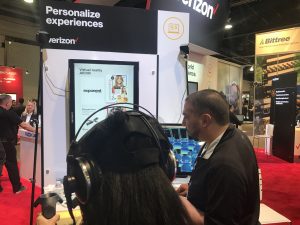
Dave Strumwasser (left), from Verizon envrmnt describes, and presents, the Verizon World Builder demo for IBM’s Marisela Riveros
While broadcasters seem to be consolidating to the point of abstraction, Sinclair – which just threw down $3.9 billion to acquire Tribune Media – was making waves with its ATSC 3.0 demos, hoping to assure the industry that technology progress will be made (in addition to massive spectrum acquisition).
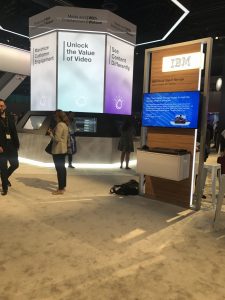
IBM Watson’s cognitive services were on display at NAB 2017
While NAB has not been much of a party scene since the go-go ‘90s, Verizon Digital Media Services threw a huge party at Top Golf, and the Sports Video Group took over the Omnia nightclub for its annual “Pre-Game” bash.
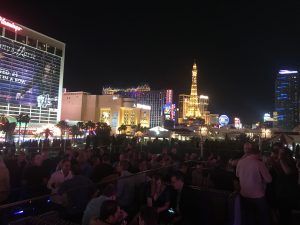
The view from the Omnia nightclub at Caesar’s Palace, site of the Sports Video Group’s annual “pre-game” bash, 04.23.17

Top Golf, site of Verizon Digital Media Services’ massive party, 04.24.17
But the real story, for me, was the transformation of the business to the cloud, whether AWS, Azure, Google, or Dell EMC, or others. The applications and innovations delivered by these bedrock services are multiplying, and driving further investment, and starting to fulfill dark fiber long laid in anticipation of something big. Something big has already arrived, though, and it’s going to require more space – up there in the cloud.
